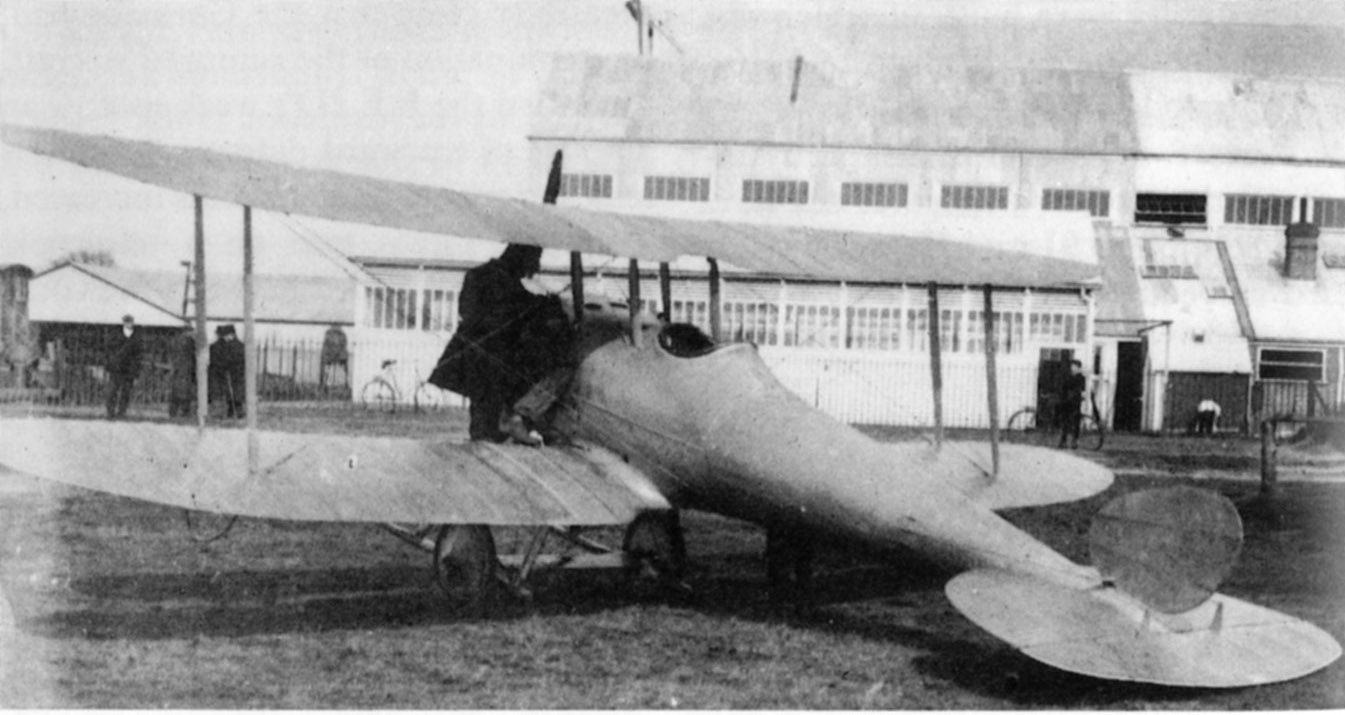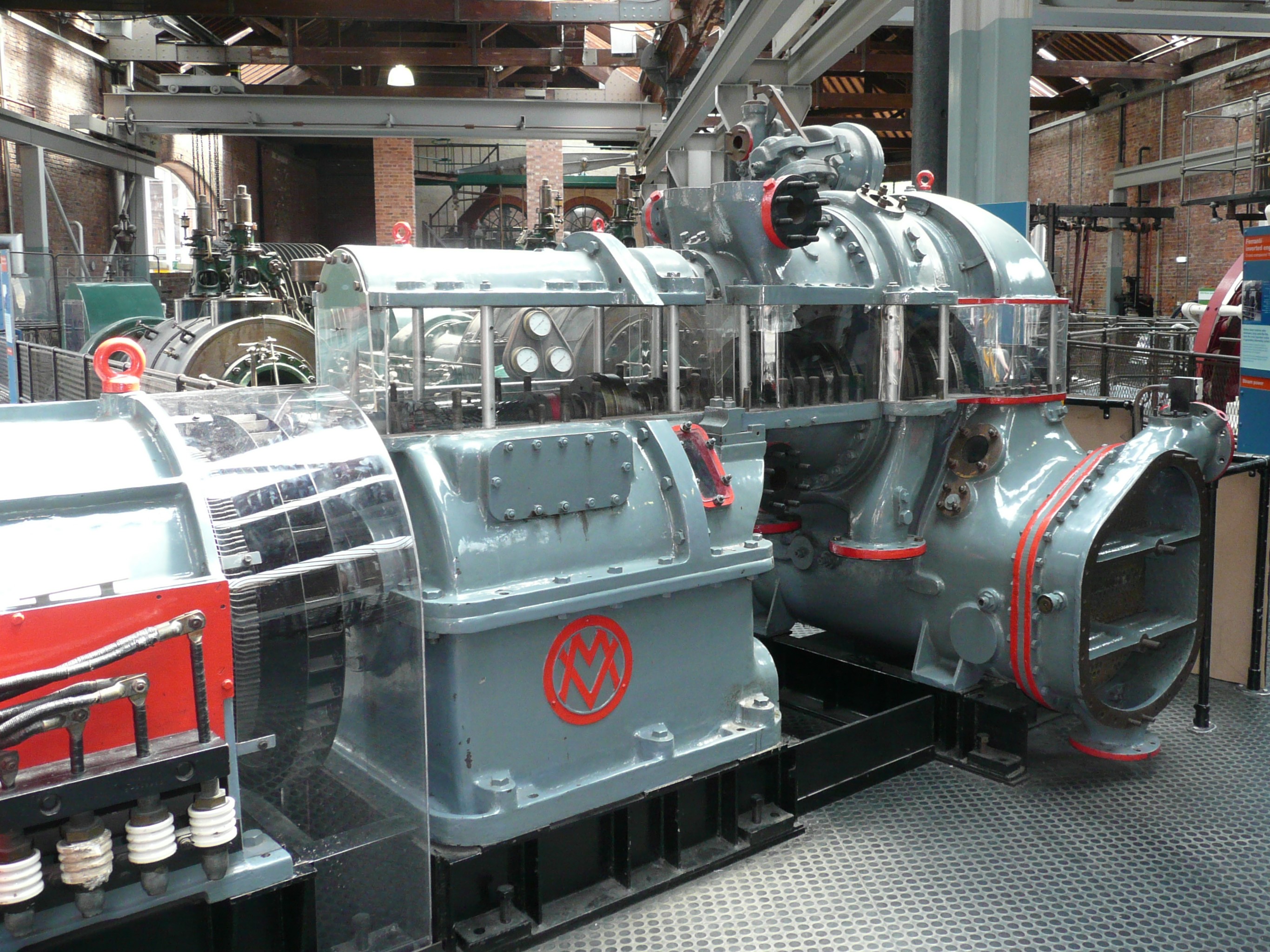|
Armstrong Siddeley ASX
The Armstrong Siddeley ASX was an early axial flow jet engine built by Armstrong Siddeley that first ran in April 1943.Gunston 1989, p.18. Only a single prototype was constructed, and it was never put into production. A turboprop version as the ASP was somewhat more successful, and as the Armstrong Siddeley Python saw use in the Westland Wyvern. History In December 1941, Metrovick ran its Metrovick F.2 engine for the first time. While successful, the engine was too heavy to be a useful aircraft engine, and the Royal Aircraft Establishment (RAE) felt this was likely due to Metrovick's history as a steam turbine company without much aircraft experience. The RAE approached Armstrong Siddeley to help with the design, both to improve the F.2 as well as to get A-S familiar with turbojet design so they might build their own designs, or others under license. However, Metrovick refused to have anything to do with them, and no amount of effort on the part of Armstrong Siddeley or the RAE ... [...More Info...] [...Related Items...] OR: [Wikipedia] [Google] [Baidu] |
WikiProject Aircraft
A WikiProject, or Wikiproject, is a Wikimedia movement affinity group for contributors with shared goals. WikiProjects are prevalent within the largest wiki, Wikipedia, and exist to varying degrees within sister projects such as Wiktionary, Wikiquote, Wikidata, and Wikisource. They also exist in different languages, and translation of articles is a form of their collaboration. During the COVID-19 pandemic, CBS News noted the role of Wikipedia's WikiProject Medicine in maintaining the accuracy of articles related to the disease. Another WikiProject that has drawn attention is WikiProject Women Scientists, which was profiled by '' Smithsonian'' for its efforts to improve coverage of women scientists which the profile noted had "helped increase the number of female scientists on Wikipedia from around 1,600 to over 5,000". On Wikipedia Some Wikipedia WikiProjects are substantial enough to engage in cooperative activities with outside organizations relevant to the field at issue. For e ... [...More Info...] [...Related Items...] OR: [Wikipedia] [Google] [Baidu] |
Royal Aircraft Establishment
The Royal Aircraft Establishment (RAE) was a British research establishment, known by several different names during its history, that eventually came under the aegis of the Ministry of Defence (United Kingdom), UK Ministry of Defence (MoD), before finally losing its identity in mergers with other institutions. The first site was at Farnborough Airfield ("RAE Farnborough") in Hampshire to which was added a second site RAE Bedford (Bedfordshire) in 1946. In 1988 it was renamed the Royal Aerospace Establishment (RAE) before merging with other research entities to become part of the new Defence Research Agency in 1991. History In 1904–1906 the Army Balloon Factory, which was part of the Army School of Ballooning, under the command of Colonel James Templer (balloon aviator), James Templer, relocated from Aldershot to the edge of Farnborough Common in order to have enough space to inflate the new "dirigible balloon" or airship which was then under construction.Walker, P; Early Avi ... [...More Info...] [...Related Items...] OR: [Wikipedia] [Google] [Baidu] |
List Of Aircraft Engines
This is an alphabetical list of aircraft engines by manufacturer. 0–9 2si *2si 215 *2si 230 * 2si 430 * 2si 460 *2si 500 * 2si 540 * 2si 690 3W ''Source: RMV'' *3W 106iB2 *3W-110 *3W-112 *3W-170 *3W-210 *3W-220 A Abadal (Francisco Serramalera Abadal) *Abadal Y-12 350/400 hp ABC ''Source: Lumsden.'' * ABC 8 hp * ABC 30hp V-4 * ABC 45hp V-6 * ABC 60hp V-8 * ABC 85hp V-6 * ABC 100hp V-8 * ABC 115 hp * ABC 170hp V-12 * ABC 225hp V-16 *ABC Dragonfly *ABC Gadfly *ABC Gnat *ABC Hornet * ABC Mosquito *ABC Scorpion *ABC Wasp *ABC type 10 APU *ABC type 11 APU ABECO ''Source: RMV'' *ABECO GEM Aberg ''Source: RMV'' *Type Sklenar ABLE ''Source: RMV'', Able Experimental Aircraft Engine Co. (Able Experimental Aircraft Engine Co., Altimizer, Hoverhawk (US)) *ABLE 2275 *ABLE 2500 *ABLE VW x 2 Geared Drive Accurate Automation Corp *Accurate Automation AT-1500 *Accurate Automation AT-1700 Ace (Ace American Engr Corp, Horace Keane Aeroplane Co, North Beac ... [...More Info...] [...Related Items...] OR: [Wikipedia] [Google] [Baidu] |
United Kingdom Military Aircraft Serials
United Kingdom military aircraft serial numbers are aircraft registration numbers used to identify individual military aircraft in the United Kingdom (UK). All UK military aircraft are allocated and display a unique registration number. A unified registration number system, maintained initially by the Air Ministry (AM), and its successor the Ministry of Defence (MoD), is used for aircraft operated by the Royal Air Force (RAF), Fleet Air Arm (FAA), and Army Air Corps (AAC). Military aircraft operated by government agencies and civilian contractors (for example QinetiQ) are also assigned registration numbers from this system. When the Royal Flying Corps (RFC) was formed in 1912, its aircraft were identified by a letter/number system related to the manufacturer. The prefix 'A' was allocated to balloons of No.1 Company, Air Battalion, Royal Engineers, the prefix 'B' to aeroplanes of No.2 Company, and the prefix 'F' to aeroplanes of the Central Flying School.Bruce 1956, p.922 ... [...More Info...] [...Related Items...] OR: [Wikipedia] [Google] [Baidu] |
Turbine
A turbine ( or ) (from the Greek , ''tyrbē'', or Latin ''turbo'', meaning vortex) is a rotary mechanical device that extracts energy from a fluid flow and converts it into useful work. The work produced by a turbine can be used for generating electrical power when combined with a generator.Munson, Bruce Roy, T. H. Okiishi, and Wade W. Huebsch. "Turbomachines." Fundamentals of Fluid Mechanics. 6th ed. Hoboken, NJ: J. Wiley & Sons, 2009. Print. A turbine is a turbomachine with at least one moving part called a rotor assembly, which is a shaft or drum with blades attached. Moving fluid acts on the blades so that they move and impart rotational energy to the rotor. Early turbine examples are windmills and waterwheels. Gas, steam, and water turbines have a casing around the blades that contains and controls the working fluid. Credit for invention of the steam turbine is given both to Anglo-Irish engineer Sir Charles Parsons (1854–1931) for invention of the reaction turbine, and to ... [...More Info...] [...Related Items...] OR: [Wikipedia] [Google] [Baidu] |
Armstrong Siddeley Sapphire
The Armstrong Siddeley Sapphire is a British turbojet engine that was produced by Armstrong Siddeley in the 1950s. It was the ultimate development of work that had started as the Metrovick F.2 in 1940, evolving into an advanced axial flow design with an annular combustion chamber that developed over . It powered early versions of the Hawker Hunter and Handley Page Victor, and every Gloster Javelin. Production was also started under licence in the United States by Wright Aeronautical as the J65, powering a number of US designs. The Sapphire's primary competitor was the Rolls-Royce Avon. Design and development Design evolution of the Sapphire started at Metropolitan-Vickers (Metrovick) in 1943 as an offshoot of the F.2 project. With the F.2 reaching flight quality at about , Metrovick turned to producing larger designs, both an enlarged F.2 known as the ''Beryl'', as well as the much larger F.9 ''Sapphire''. (The names were chosen after a decision to use gemstones for future e ... [...More Info...] [...Related Items...] OR: [Wikipedia] [Google] [Baidu] |
Ministry Of Supply
The Ministry of Supply (MoS) was a department of the UK government formed in 1939 to co-ordinate the supply of equipment to all three British armed forces, headed by the Minister of Supply. A separate ministry, however, was responsible for aircraft production, and the Admiralty retained responsibilities for supplying the Royal Navy.Hornby (1958) During the war years the MoS was based at Shell Mex House in The Strand, London. The Ministry of Supply also took over all army research establishments in 1939. The Ministry of Aircraft Production was abolished in 1946, and the MoS took over its responsibilities for aircraft, including the associated research establishments. In the same year, it also took on increased responsibilities for atomic weapons, including the H-bomb development programme. The Ministry of Supply was abolished in late 1959 and its responsibilities passed to the Ministry of Aviation, the War Office, and the Air Ministry. The latter two ministries were subsequently ... [...More Info...] [...Related Items...] OR: [Wikipedia] [Google] [Baidu] |
Stewart Tresilian
Stewart Tresilian (9 January 1904 – 20 May 1962) was a British mechanical engineer, who played a significant role in the early development of British aero engines during World War II. Early life He gained a BA degree in Engineering from the University of Cambridge. Career Rolls-Royce In the 1920s he worked at Rolls-Royce on aero-engines. In the early 1930s he worked as the chief assistant to Arthur Rowledge at Rolls-Royce on the R engine. Templewood Engineering For around a year, from 1938 to 1939, he worked as an independent consultant under the name 'Templewood Engineering', an owned subsidiary of High Duty Alloys Ltd. Wallace C. Devereux set up this offshoot company in order to market their Hiduminium range of high-performance aluminium alloys to the motor-racing industry. One of Tresilian's innovations was to encourage the use of these alloys as extrusions, as well as the previous forgings. Armstrong Siddeley In 1939 he became the Chief Engineer of Armstrong Siddele ... [...More Info...] [...Related Items...] OR: [Wikipedia] [Google] [Baidu] |
Alan Arnold Griffith
Alan Arnold Griffith (13 June 1893 – 13 October 1963), son of Victorian science fiction writer George Griffith, was an English engineer. Among many other contributions he is best known for his work on stress and fracture in metals that is now known as metal fatigue, as well as being one of the first to develop a strong theoretical basis for the jet engine. Griffith's advanced axial-flow turbojet engine designs, were integral in the creation of Britain's first operational axial-flow turbojet engine, the Metropolitan-Vickers F.2 which first ran successfully in 1941. Griffith however had little direct involvement in actually producing the engine, after he moved in 1939 from leading the engine department at the Royal Aircraft Establishment to start work at Rolls-Royce. Early work A. A. Griffith took a first in mechanical engineering, followed by a master's degree and a Doctorate from the University of Liverpool. In 1915 he was accepted by the Royal Aircraft Factory as a traine ... [...More Info...] [...Related Items...] OR: [Wikipedia] [Google] [Baidu] |
Steam Turbine
A steam turbine is a machine that extracts thermal energy from pressurized steam and uses it to do mechanical work on a rotating output shaft. Its modern manifestation was invented by Charles Parsons in 1884. Fabrication of a modern steam turbine involves advanced metalwork to form high-grade steel alloys into precision parts using technologies that first became available in the 20th century; continued advances in durability and efficiency of steam turbines remains central to the energy economics of the 21st century. The steam turbine is a form of heat engine that derives much of its improvement in thermodynamic efficiency from the use of multiple stages in the expansion of the steam, which results in a closer approach to the ideal reversible expansion process. Because the turbine generates rotary motion, it can be coupled to a generator to harness its motion into electricity. Such turbogenerators are the core of thermal power stations which can be fueled by fossil-fuels, ... [...More Info...] [...Related Items...] OR: [Wikipedia] [Google] [Baidu] |
Metrovick F
Metropolitan-Vickers, Metrovick, or Metrovicks, was a British heavy electrical engineering company of the early-to-mid 20th century formerly known as British Westinghouse. Highly diversified, it was particularly well known for its industrial electrical equipment such as generators, steam turbines, switchgear, transformers, electronics and railway traction equipment. Metrovick holds a place in history as the builders of the first commercial transistor computer, the Metrovick 950, and the first British axial-flow jet engine, the Metropolitan-Vickers F.2. Its factory in Trafford Park, Manchester, was for most of the 20th century one of the biggest and most important heavy engineering facilities in Britain and the world. History Metrovick started as a way to separate the existing British Westinghouse Electrical and Manufacturing Company factories from United States control, which had proven to be a hindrance to gaining government contracts during the First World War. In 1917 ... [...More Info...] [...Related Items...] OR: [Wikipedia] [Google] [Baidu] |





